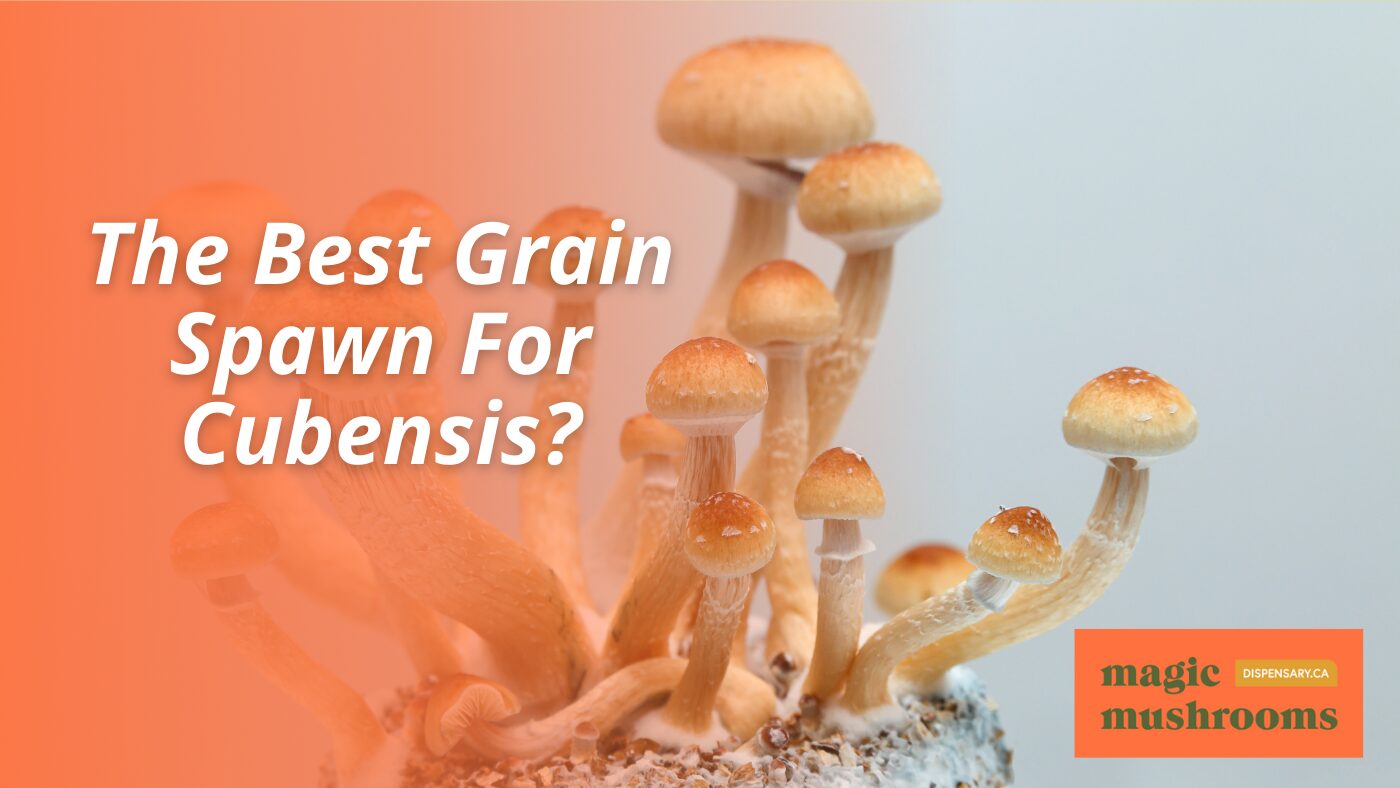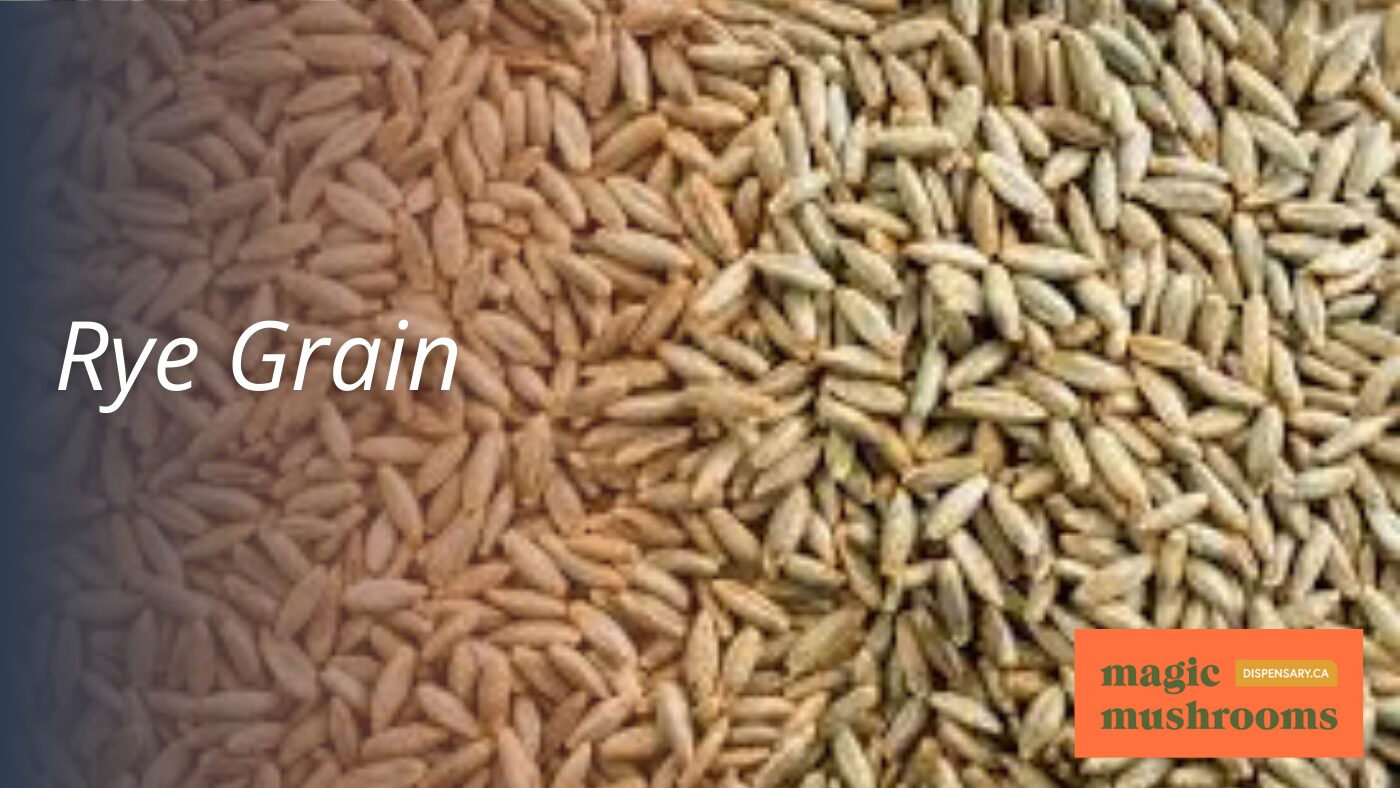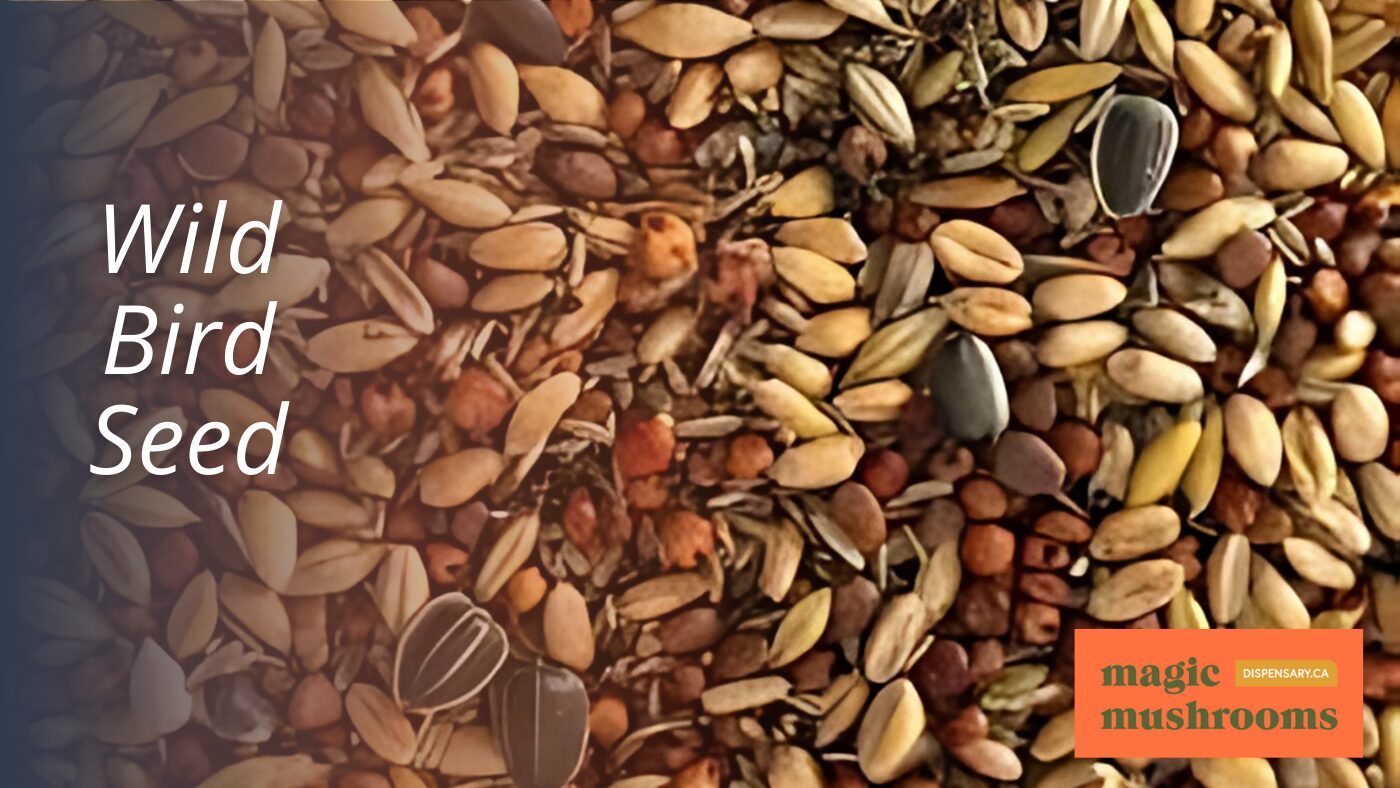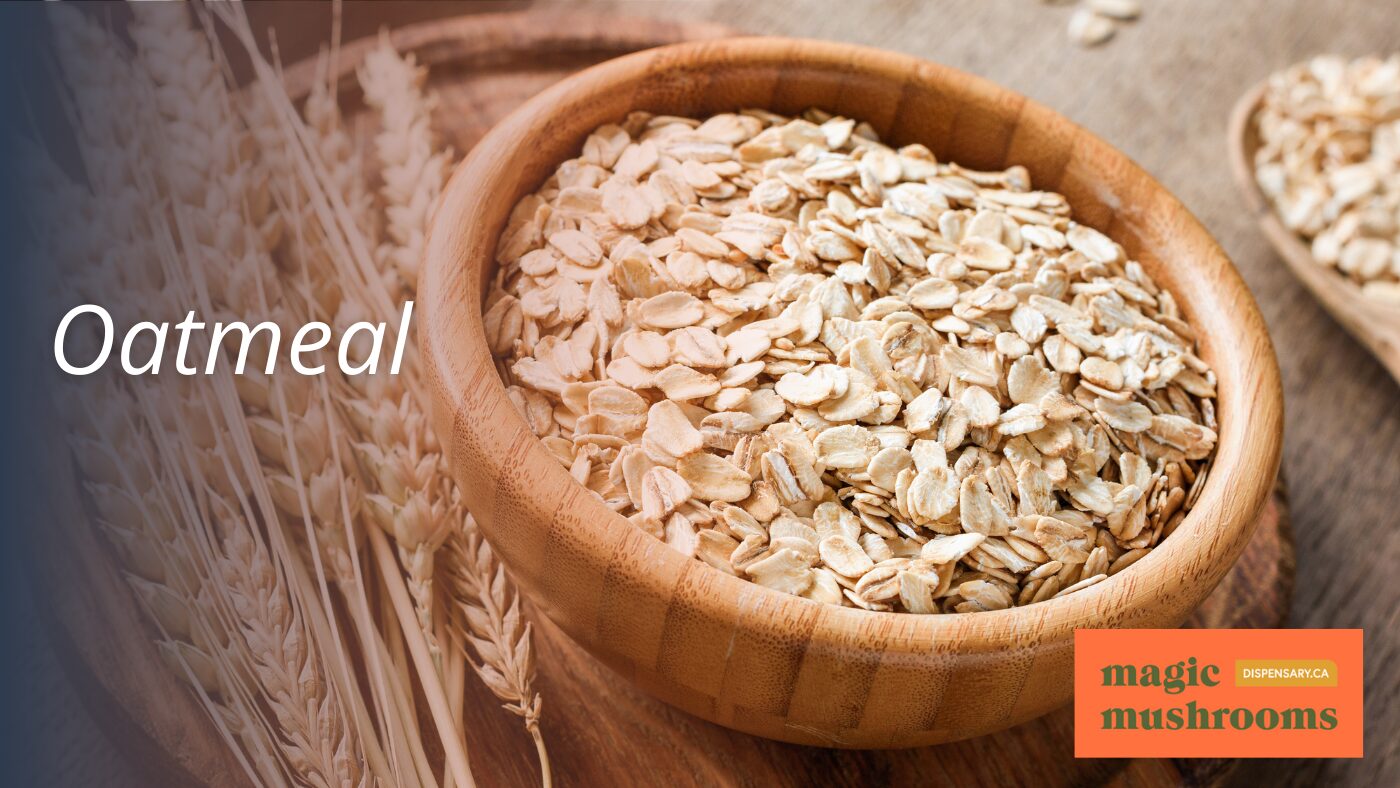

Cultivating cubensis mushrooms, also referred to as ‘magic mushrooms,’ involves selecting the appropriate grain spawn. This is an essential stage since the spawn serves as the nutritional foundation for the mushroom spores to sprout and develop. This piece delves into different grains that can be utilized as spawn, aiding in determining the most suitable option for your requirements.

Rye grain is often considered the top pick for cultivating Cubensis mushrooms. Mushrooms thrive on rye because it serves as an excellent nutritional food source. One of the standout features of rye grain is its fantastic water retention capabilities. It holds more moisture than any other grain, ensuring the mushrooms have ample water and protein to feed in their mushroom fruiting bag.
However, rye grain is not without its challenges. It has the highest nitrogen levels among commercial grains, which benefits mushroom growth. On the downside, rye grain also has the highest endospore load, making it harder to sterilize thoroughly. This means extra care must be taken during sterilization to ensure successful cultivation.
Rye grain is not commonly found on the shelves of your usual grocery store, which may make it a poor choice for mycology amateurs. You may need to buy rye grain at a specialty store. Despite these challenges, the benefits of using rye grain often outweigh the drawbacks for experienced cultivators.
Millet is a popular choice for beginners. It comes in red and white colors and is the smallest of the grains we recommend for spawning. Millet has a much lower endospore load than rye or wheat, which makes it less prone to contamination. The small size means your spawn will have many more inoculation points, which helps your mycelium spread. The drawback to using millet exclusively is that, with less nitrogen and fewer nutrients than rye or wheat, mushrooms will consume it quickly and give you a lower yield.
Millet is a great option for those new to mushroom cultivation, offering a balance of ease and efficiency. However, it may need to be supplemented with other grains for optimal results.
Brown rice flour, often called BRF, is popular among mushroom cultivators, especially for beginners. It is commonly used in preparing BRF cakes, which serve as an excellent medium for the early stages of mushroom growth. The flour’s fine texture allows for easy colonization by the spores, making it a reliable option for those new to the hobby.
For small-scale hobby growers, brown rice flour can be a suitable choice. However, it may not be the best option for those looking to scale up their operations.

Wild Bird Seed (WBS) is popular among hobby growers due to its affordability and availability at most garden centers and hardware stores. However, commercial growers tend to avoid it because it doesn’t retain water well and is inconsistent in quality. WBS can still be a viable option if you can’t find other grains.
When selecting WBS, choosing a mix that doesn’t contain sunflower shells is essential, as these can be problematic. This can sometimes be challenging, but finding a suitable mix’s worth the effort.
While WBS is not the best option for commercial cultivation, it remains a practical choice for hobbyists who need an easily accessible and low-cost grain spawn.
Wheat berries, wheat grain, or wheat seeds are excellent choices for grain spawn. Their performance is similar to that of rye grain, making them a reliable option for cultivators. However, wheat berries retain less water than rye, making them more likely to break during processing. Despite this drawback, they are more commonly available and can be purchased in bulk at many food stores.
One of the advantages of using wheat berries is their availability. You can often find organic wheat berries at bulk food stores, making them a convenient option for many growers. Additionally, they can be prepared using the same method as rye grain, simplifying the process for those familiar with rye.
Wheat berries are one of the best grains for mushroom spawn on our list. Their performance and availability make them a top choice for many cultivators.
In summary, while wheat berries may not hold as much water as rye and are prone to breaking, their widespread availability and similar performance to rye make them an excellent option for grain spawn.
Popcorn is a popular choice for grain spawn due to its accessibility. You can easily find it in most grocery stores and might even have it in your cupboard already! However, popcorn kernels are pretty large, so you will have fewer inoculation points when using a syringe to introduce the mycelium.
Another consideration is the time it takes for the mycelium to colonize the popcorn. Because the kernels are significant, there are bigger gaps for the mycelium to “jump” across, which can slow down the colonization process. Despite these drawbacks, many cultivators find popcorn suitable for small-scale cultivation.
Popcorn spawn is actually pretty good. Although it is more expensive compared to other grains, its availability makes it a convenient choice for many hobbyists.

Oatmeal is a viable option for grain spawn, but it has challenges. Oats can be tricky to prepare because they tend to become sticky and soft during the cooking process. This stickiness can make achieving the right consistency for optimal growth challenging.
However, oats are often favored for their cost-effectiveness. They are generally cheaper than other grains like wild bird seed, making them a budget-friendly choice for many cultivators. Additionally, the soft and grassy hull of oats provides a conducive environment for mycelium growth.
While oats are economical, their preparation requires careful attention to avoid issues related to stickiness and softness. Proper hydration and cooking techniques are essential for successful cultivation.
In summary, oatmeal can be a good choice for grain spawn if you are willing to put in the extra effort to prepare it correctly. Its affordability and growth-friendly hull make it a popular option despite the preparation challenges.
Barley is another cereal grain that can be used for mushroom spawn, though it is not the best option. The grains often become mushy and wet, with many broken pieces. This can make it less effective compared to other grains.
To prepare barley for use as spawn, it must be soaked and boiled. This helps to hydrate the grains but can also make them more prone to breaking.
Pros:
Cons:
While barley can be used for mushroom spawn, it is not ideal. Other grains like rye or millet may offer better results. If you do choose to use barley, be prepared for some challenges in the process.
Sorghum, also known as milo, is a popular choice among commercial growers for grain spawn. This grain is often used in animal feed, making it an affordable option for large-scale cultivation. Sorghum’s uniformity ensures even hydration, similar to rye, wheat, and millet. Additionally, its lower endospore load makes it less prone to contamination compared to other grains.
Sorghum comes in white or red varieties and, due to its size, offers numerous inoculation points. This characteristic makes it an excellent choice for those looking to maximize their yield. The grain’s higher nitrogen content also provides an added benefit, promoting robust growth of the mushroom mycelium.
For those interested in cultivating Psilocybe cubensis, sorghum presents a reliable and efficient option for grain spawn.

Corn is a popular choice for grain spawn among mushroom cultivators. It is readily available and relatively inexpensive. Corn kernels are large, which means fewer inoculation points for the mycelium starter used for mushroom production. This can slow the colonization process as the mycelium has to bridge more significant gaps between kernels.
When using corn as grain spawn, patience is key. The larger kernel size means the mycelium will take longer to colonise, but the results can be rewarding.
Corn can be a viable option for those experimenting with different grain spawn types. While its drawbacks, its availability and cost-effectiveness make it worth considering.
Corn is a versatile and essential crop that has been a staple in diets worldwide for centuries. From delicious corn on the cob to popcorn and cornmeal, this golden grain offers a variety of uses. If you’re interested in learning more about the benefits of corn and how to incorporate it into your meals, visit our website for more information and recipes.
In conclusion, selecting the right grain spawn is crucial for successfully cultivating cubensis mushrooms. Each type of grain, from rye to millet, offers unique benefits and challenges. With its excellent water retention and nutritional profile, Rye grain often stands out as a top choice. However, the best grain for your needs will depend on availability and specific growing conditions. Cultivators can make informed decisions that enhance their mushroom-growing experience by understanding the properties of different grains. Ultimately, the key to successful cultivation lies in careful selection and preparation of the grain spawn.
Grain spawn is like the seeds for mushrooms. It’s made from fungal genetics selected and cloned for consistent mushroom growth. The mycelium, the living fungal culture, is grown on sterilized grain.
Rye grain is a favorite because it holds a lot of water and doesn’t get mushy. Mushrooms love it for its nutrition.
Yes, brown rice flour can be used. It’s popular and has shown promising results, especially in cakes.
Wild bird seed can be used well for mushroom spawn. It’s a mix of different seeds that provide various nutrients for the mushrooms.
It would be best if you sterilized the grain first. This usually involves soaking, boiling, and then pressure cooking it to kill any unwanted organisms.
The tiny millet has a large surface area, which helps the mycelium colonize quickly. It’s also easy to find and prepare.
Yes, popcorn can be used. It’s larger than other grains but can still provide a suitable medium for mycelium growth.
While a specialized lab can ensure the best conditions, many people successfully make grain spawn at home with proper sterilization techniques.